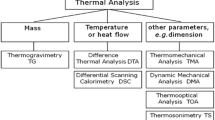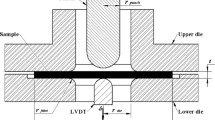Abstract
Experience with neutron activation analyses of ultrapure materials in electronics has revealed the most important error sources and the possibilities of avoiding these. Among the trace analysis problems, increased attention must above all be devoted to sample homogeneity, surface impurities and, in chemical operations before irradiation, also to the blank value. Moreover, there are the dangers specific to activation analyses of specimen changes through radiation heating and radiation recoil, the development of unexpected nuclear reactions with extremely high neutron fluxes as well as the formation of hot atoms, which is disturbing in chemical separations. By means of a few examples the advantage of the location of impurities by autoradiographic techniques is shown.
Zusammenfassung
Aus den Erfahrungen mit Neutronenaktivierungsanalysen von hochreinen Materialien der Elektronik werden die wichtigsten Fehlerquellen und die Möglichkeiten zu deren Vermeidung aufgezeigt. Von den spurenanalytischen Problemen muß vor allem der Probenhomogenität, den Oberflächenverunreinigungen und, bei chemischen Operationen vor der Bestrahlung, auch dem Blindwert erhöhte Aufmerksamkeit gewidmet werden. Hinzu kommen die für Aktivierungsanalysen spezifischen Gefahren der Probenveränderung durch Strahlungsaufheizung und Strahlungsrückstoß, der Ablauf unerwarteter Kernreaktionen bei extrem hohen Neutronenflüssen sowie die für chemische Trennungen störende Bildung heißer Atome. An Hand einiger Beispiele wird die Nützlichkeit der Ortung von Verunreinigungselementen durch autoradiographische Aufnahmen nachgewiesen.
Similar content being viewed by others
Literatur
Gebauhr, W., Martin, J.: diese Z. 200, 266 (1964).
Haan, E. F., van der Drift, A., Schampers, P. P. M.: Philips Techn. Rdsch. 25, 251 (1964).
Irving, B. A.: The electrochemistry of semiconductors, p. 256, hrsg. von P. J. Holmes. London-New York: Acad. Press 1962.
Kern, W.: RCA Review 31, 207, 234 (1970); 32, 64 (1971).
Marth, W.: Bestrahlungstechnik an Forschungsreaktoren, S. 39. Thiemig-Taschenbücher, Band 13, 1969.
Martin, J.: Semiconductor silicon, S. 547; hrsg. von R. R. Haberecht u. E. L. Kern. New York: The Electrochemical Society, Inc. 1969.
Neeb, K. H., Franke, R., Neidl, H.: diese Z. 247, 225 (1969).
Niese, S.: Kernenergie 7, 105 (1964).
Seith, W., Heumann, Th.: Diffusion in Metallen, S. 185. Berlin-Göttingen-Heidelberg: Springer 1955.
Author information
Authors and Affiliations
Additional information
Vorgetragen anläßlich des „3. Seminars Aktivierungs-analyse“ im Kernforschungszentrum Karlsruhe, 30./31.Mai 1972.
Rights and permissions
About this article
Cite this article
Martin, J.A., Haas, E. & Fischer, G. Fehlerquellen bei Aktivierungsanalysen hochreiner Materialien. Z. Anal. Chem. 265, 122–128 (1973). https://doi.org/10.1007/BF00423964
Received:
Published:
Issue Date:
DOI: https://doi.org/10.1007/BF00423964




